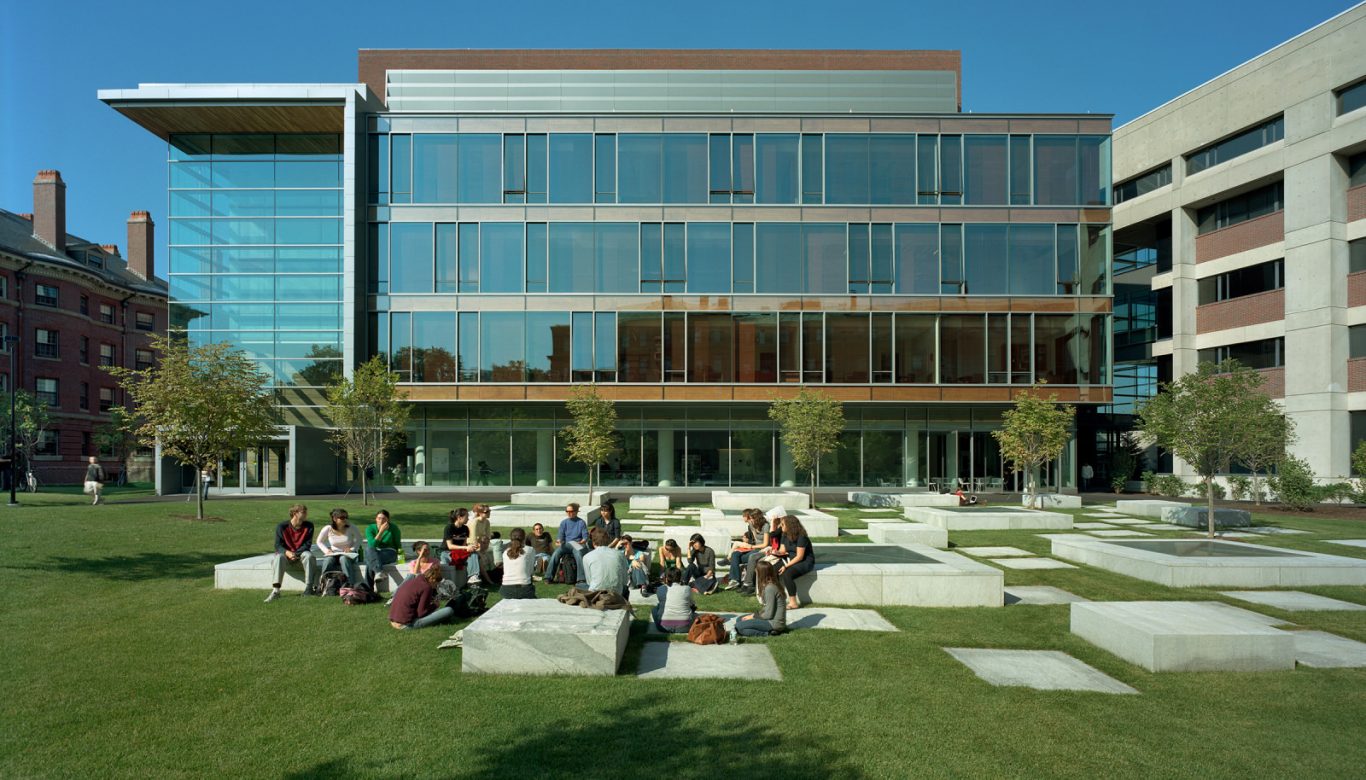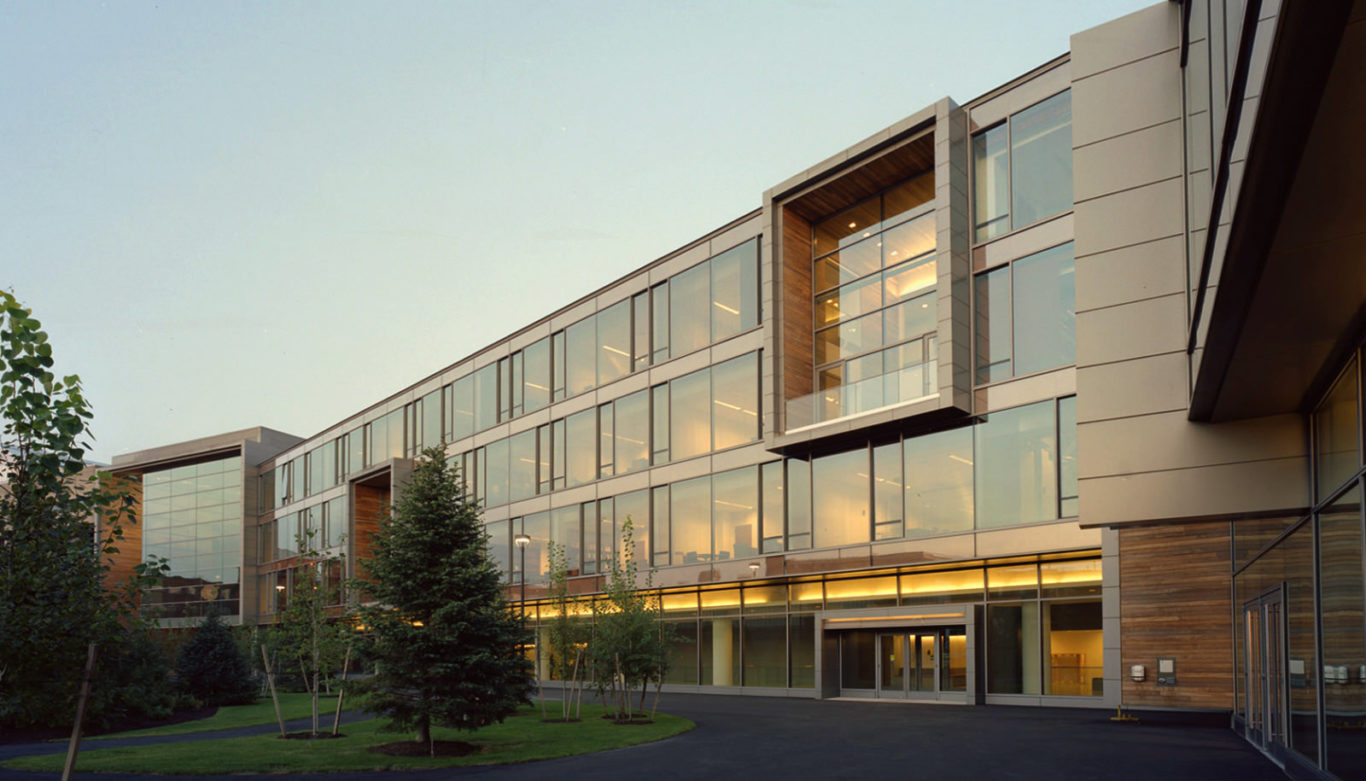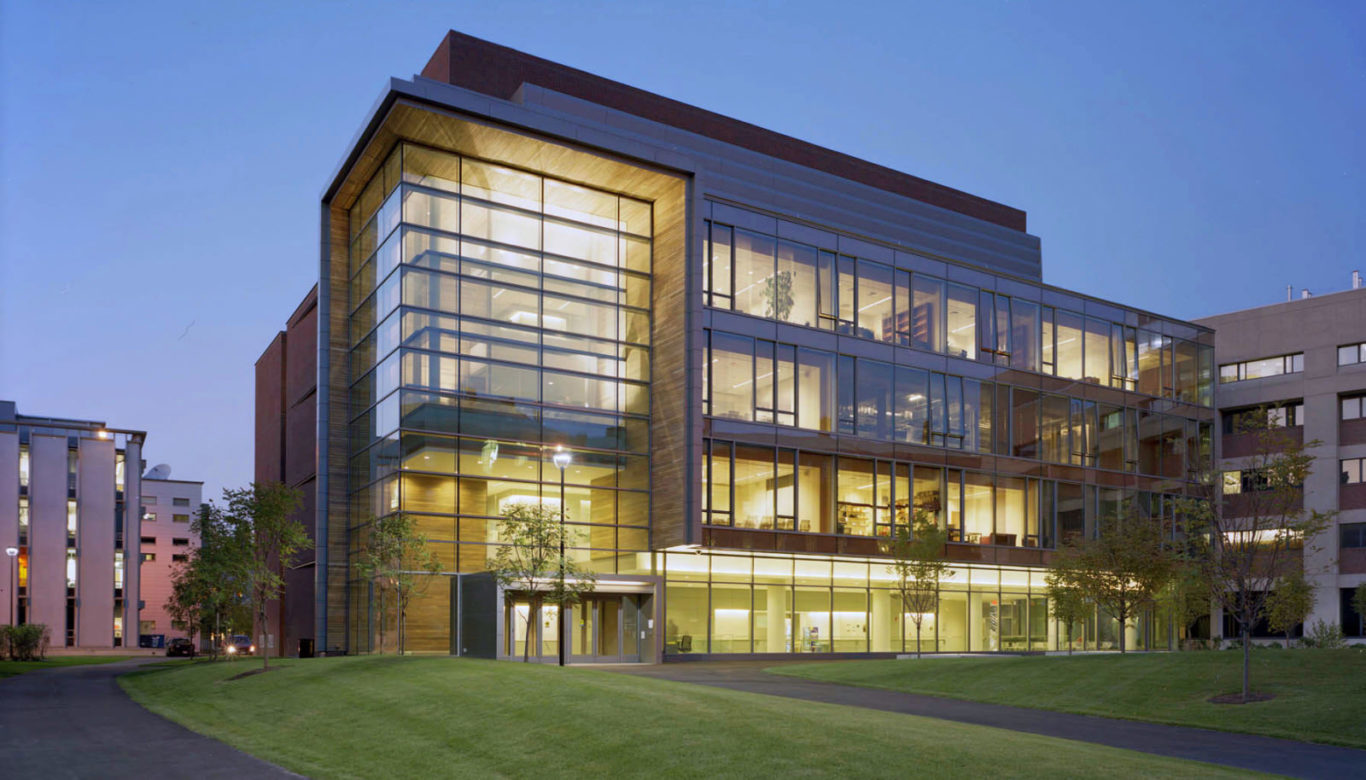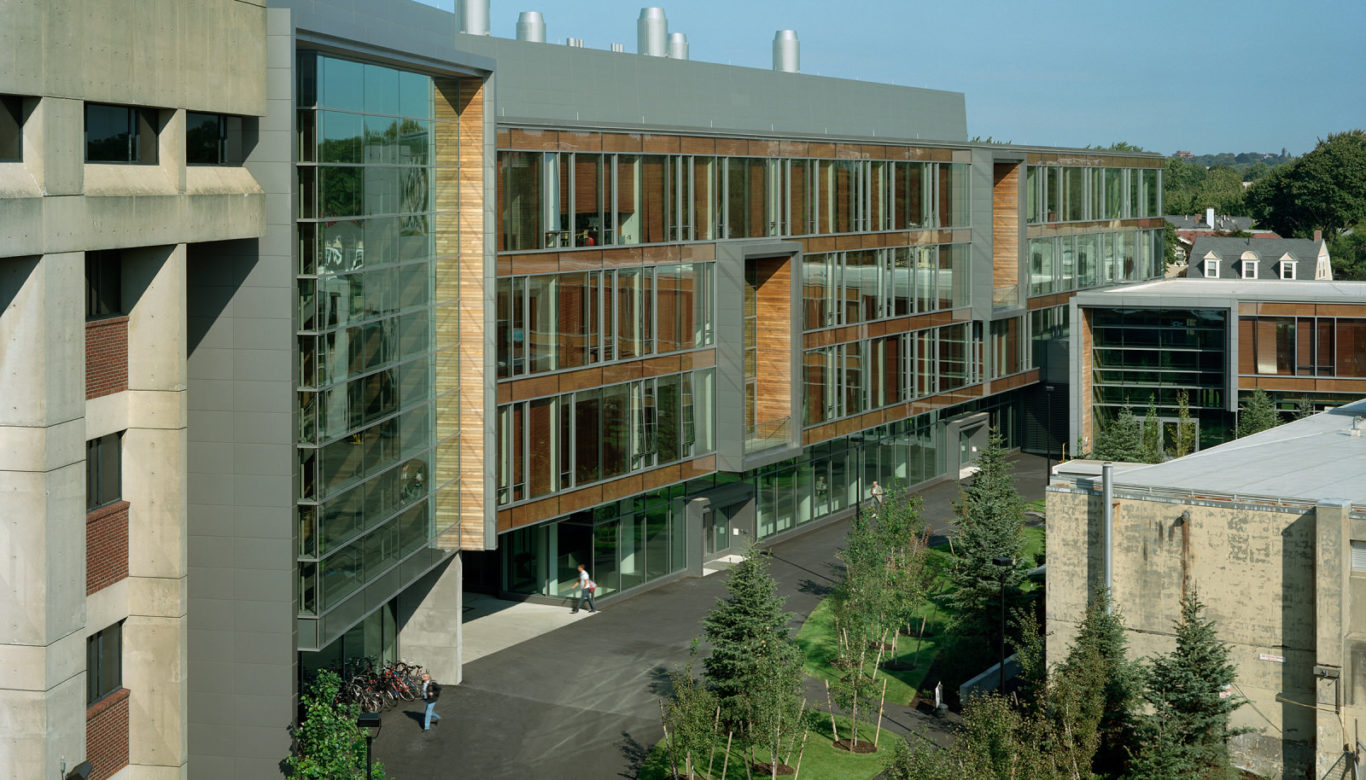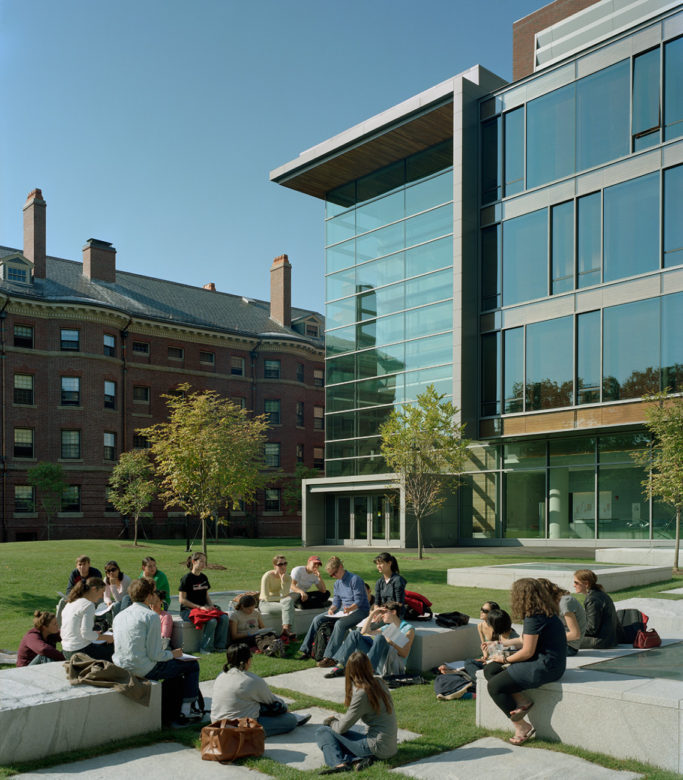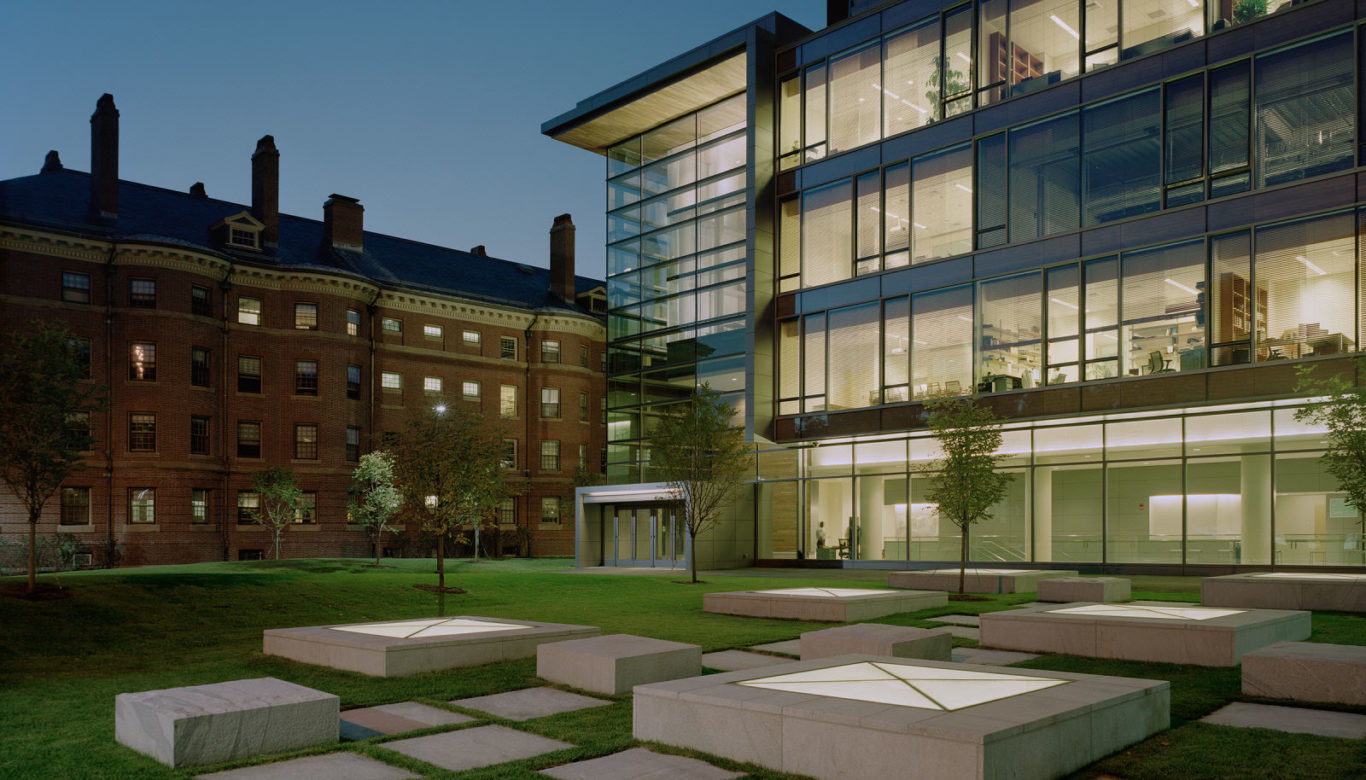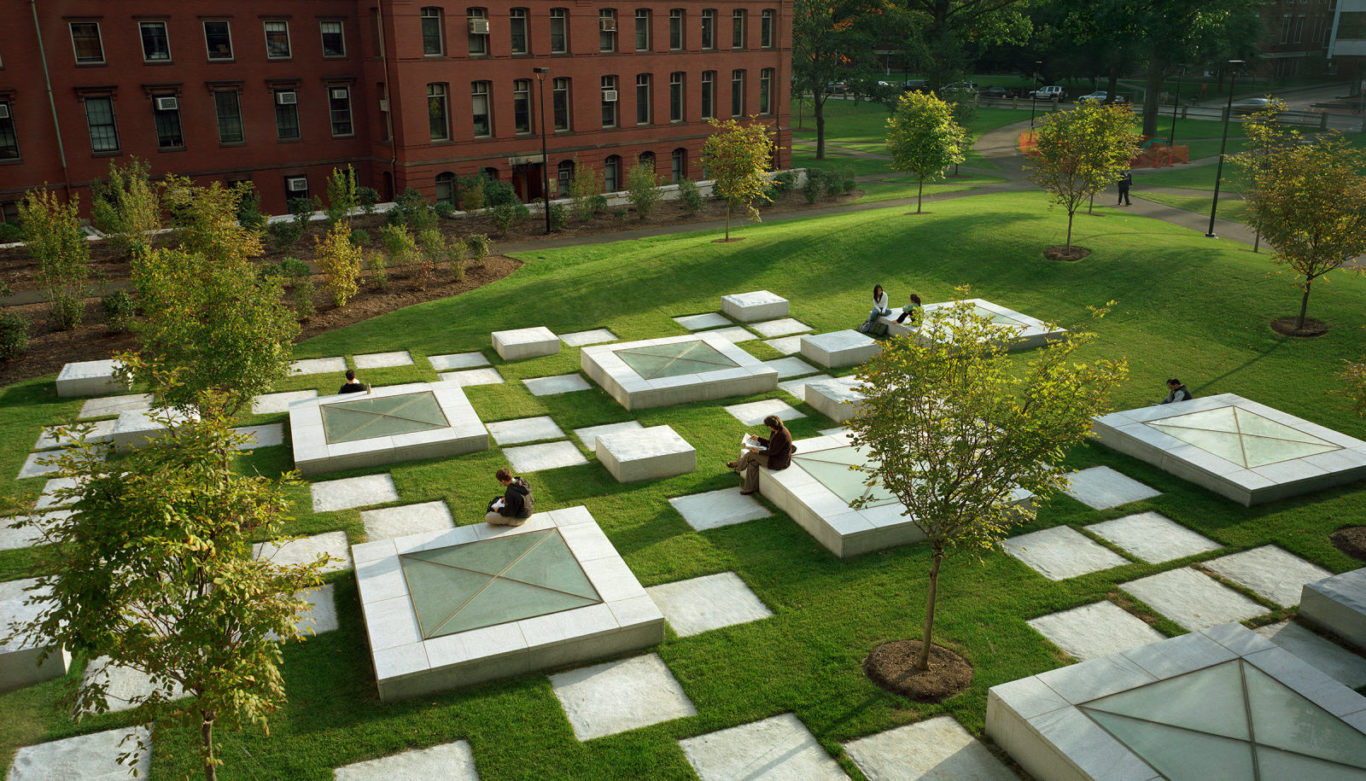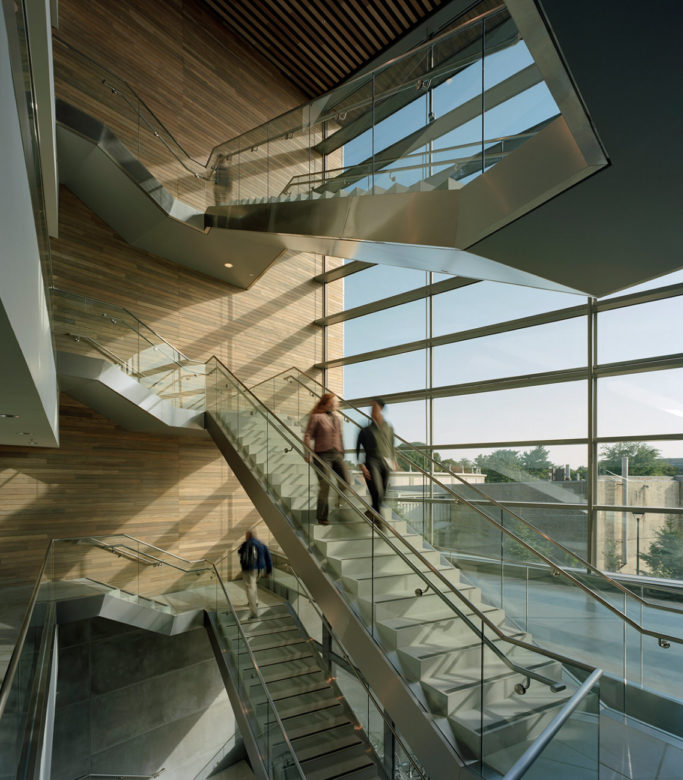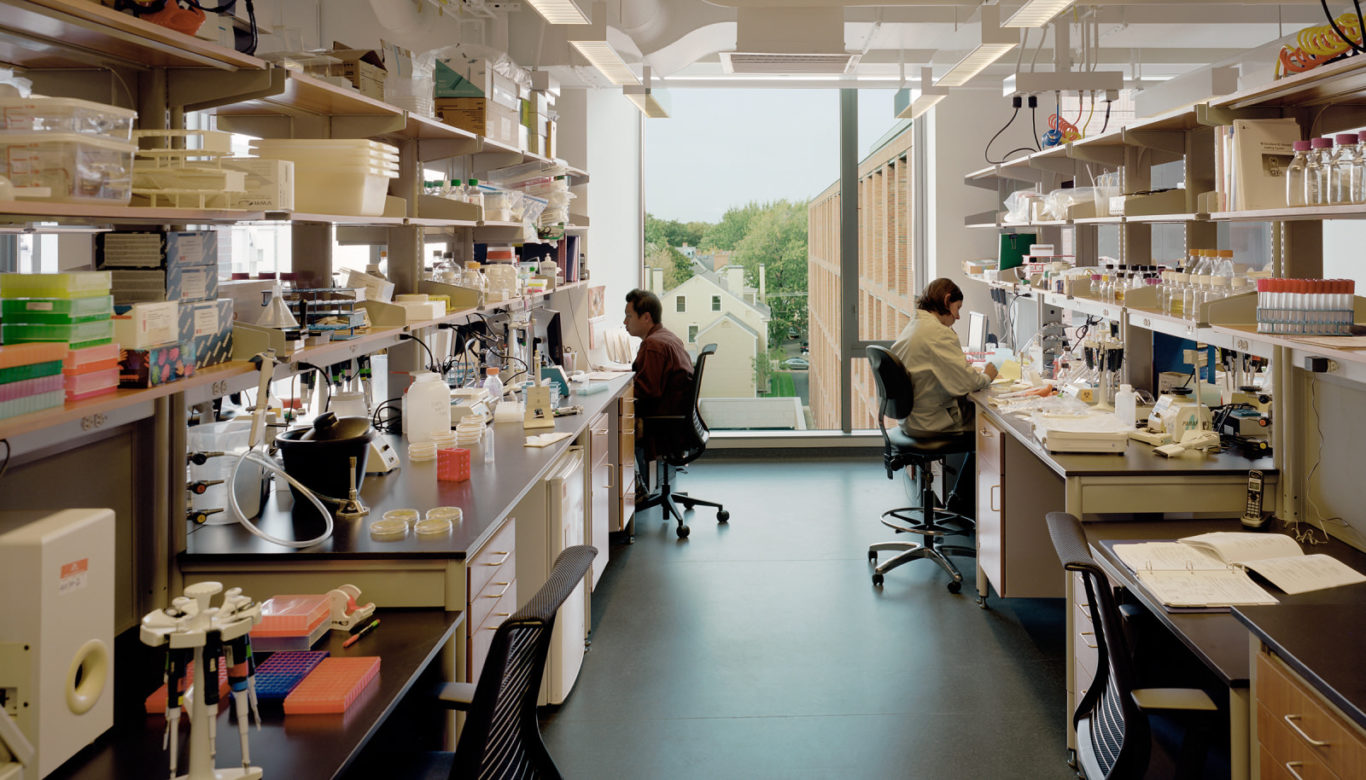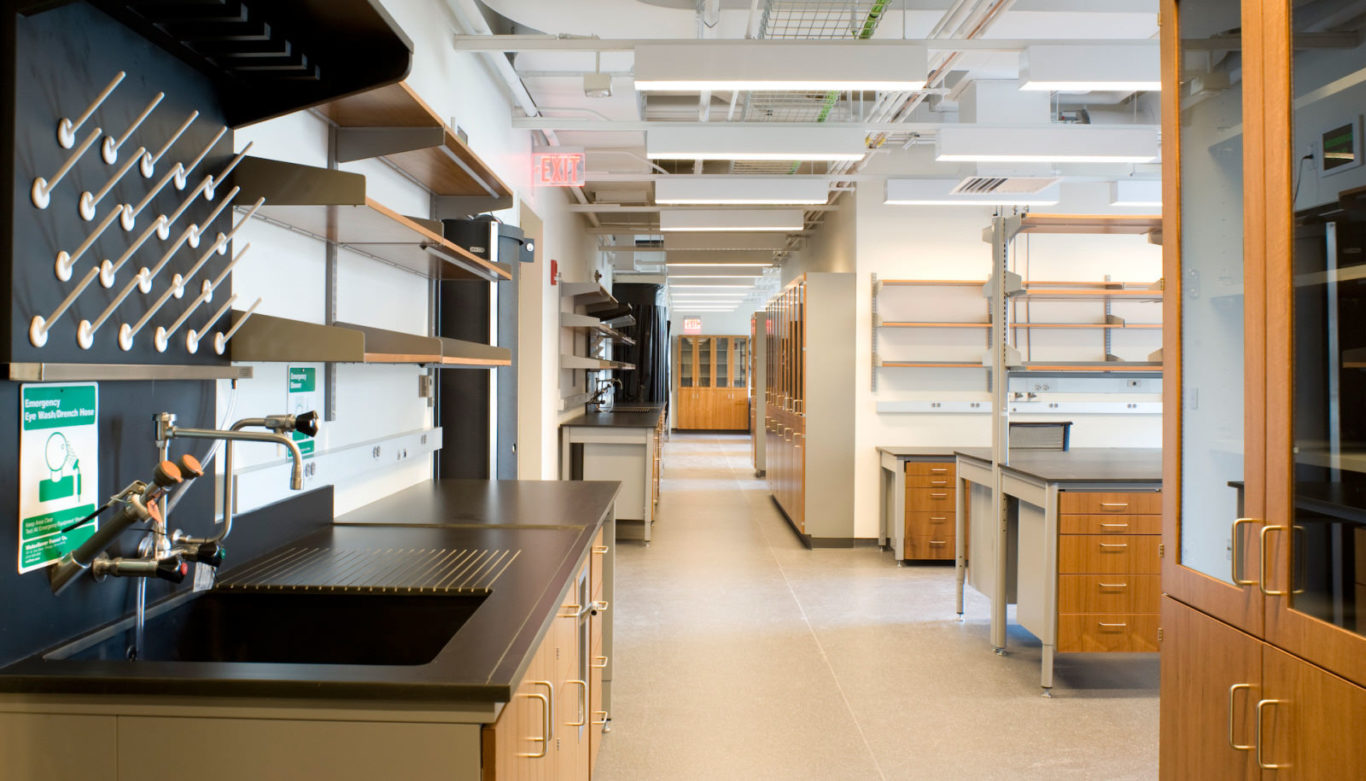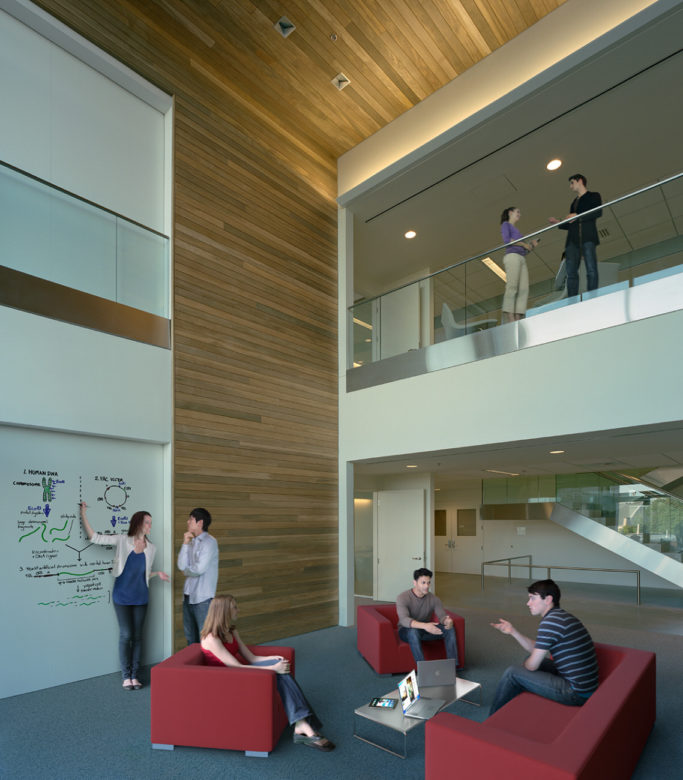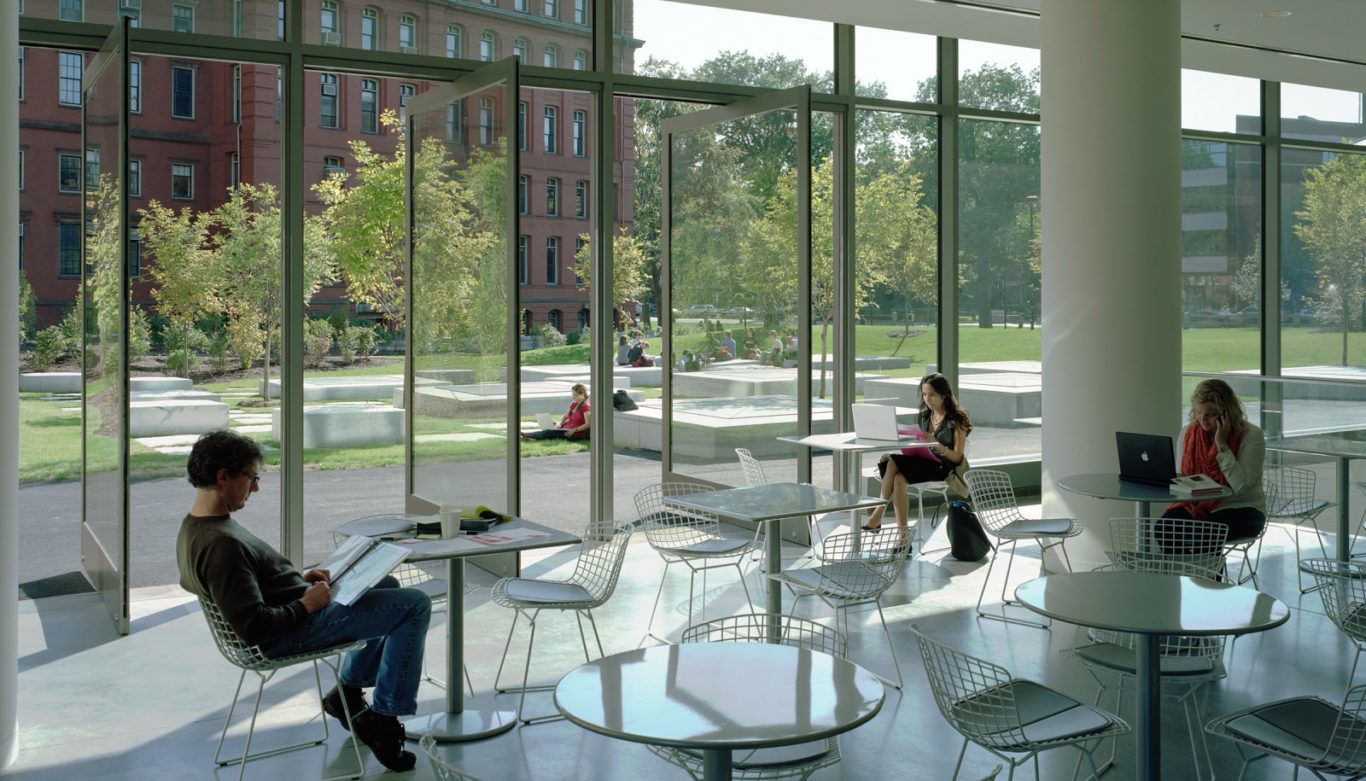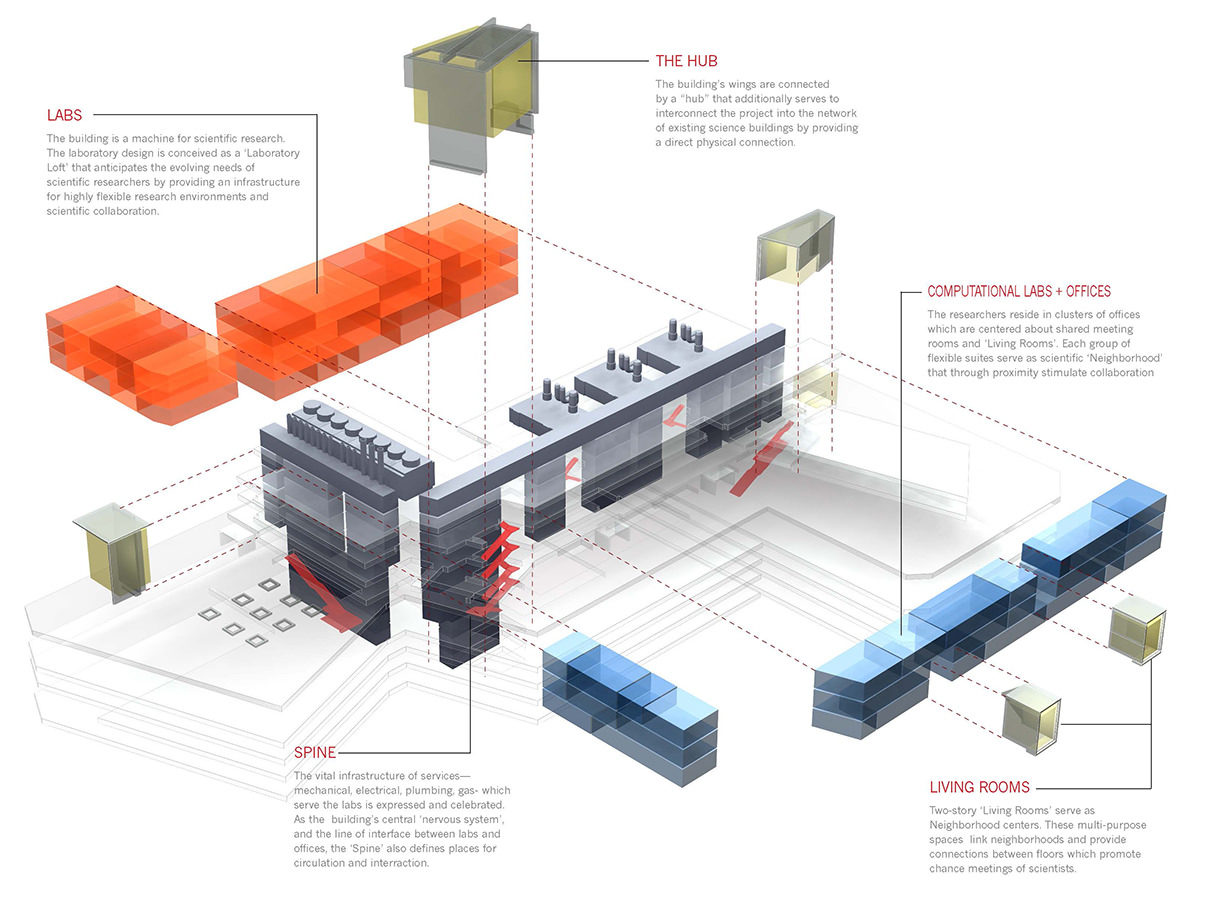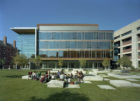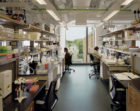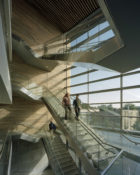Upon its completion, the Northwest Science Building marked Harvard University’s largest project in recent history. The facility houses neuroscience, bioengineering, computational analysis, and other programs under one roof and has become a model for a new generation of research environments.
When SOM set out to design the project, the client had several specific requests. The university wanted a highly efficient and flexible facility that could meet rapidly changing needs; a building that could be completed in as little time as possible; and a timeless piece of architecture that worked in concert with its surroundings. The site presented unusual challenges, as it was woven between six existing buildings and faced a quiet, historic neighborhood.
In response to these needs and conditions, the design team tightly stitched two intersecting, rectilinear volumes into the university fabric and added new paths and grassy yards. Inside, gathering spaces are sprinkled throughout, and laboratories act as configurable “lofts,” allowing the university to easily reassign areas to research teams. The building is appropriate in scale and embraces the organizational structure and architectural language of Harvard’s storied campus.
